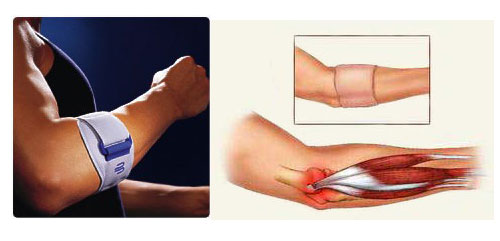Clinical Trials
Tennis Elbow (Lateral Epicondylitis) Study
One of the most popular treatments is elbow bracing, with various brace designs available. The theory currently most widely accepted is that counterforce bracing works by transferring the forces of muscle contractions away from the attachment above the elbow. It achieves this by pressing over the muscle belly a few centimetres below the attachment, effectively "by-passing" the damaged portion of tendon.

Do braces work?
We are are conducting this trial, because despite braces being available for decades, there is no valid proof they actually add anything to the management of tennis elbow. There are simple braces, without a specific counterforce mechanism, which according to some studies work just as well. Patients are randomly allocated with one of the braces, either counterforce or simple, to help determine their effect on their tennis elbow. The braces are provided free of charge.
In addition to the brace, patients are given the best current medical practice treatment and exercise regime. Previous studies show an improvement in over 60% of patients on the best medical practice regime alone, with a variable additive effect from the bracing.
Patients that enter the trial need to wear the brace anytime they use their arm, which in most people will be throughout the day. They especially need to wear the brace during any moderate to heavy activity and during the exercise regime we prescribe. We do not anticipate any problems while wearing the braces. Patients' progress will be monitored, with follow up visits at two weeks, six weeks, then three and six months.
To be eligible for the study, patients need to be over 18, have suffered from tennis elbow for at least four weeks, but no more than 6 months and have not responded to maximal medical treatment. Exclusion criteria are: previous surgery to the elbow, symptoms that appear referred from a source other than the elbow, painful shoulder or wrist, previous elbow dislocation of the affected side, distal neurological symptoms and patients unable or unwilling to fulfil the follow-up requirements.